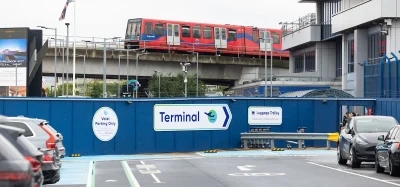At the airport, travellers crave transparency. Let’s give it to them
Posted: 6 January 2025 | Karen Mazurkewich | No comments yet
Karen Mazurkewich, Vice-President of Stakeholder Relations and Communications, Toronto Pearson International Airport explains how the airport is working to give passengers more transparency when it comes to flight disruption.


Every year, airlines and airports play host to several billion passengers who spend their hard-earned money with us, who put their lives in our hands, who rely on us to get where they need to be for business or pleasure. When the weather takes a turn, when there’s a mechanical problem with their plane, when their flight gets delayed – they want to understand why, they want transparency.
The answers are rarely straightforward. Airports are complicated places where airlines, service providers, government agencies, retailers and other partners are forced to perform a delicate daily dance in unison. Inevitably, passengers can’t understand who’s responsible for what: who handles baggage (airlines), who chooses landing paths (air traffic controllers), who controls the weather (someone, please tell me).
But their lack of understanding is a perfect opportunity for us to jump in and explain. In fact, that’s exactly the kind of transparency they’re craving. Too often, we tell our passengers that the reasons for delays and cancellations are too complicated for them to understand, or none of their business.
Join us live: Shaping the Next Generation of Hold Baggage and Air Cargo Screening
Join us live for an insightful webinar on 11th December at 14:00 GMT, in collaboration with Smiths Detection, as we explore the strategic balance of operational efficiency, regulatory compliance, and sustainability in high-volume security environments.
This session offers a focused look into future-proofing your security strategy.
Key learning points
- Cost Reduction: Strategies to minimize bag travel time while simultaneously reducing operational costs.
- Regulatory Roadmap: Insights into the next wave of regulatory changes and their impact on future investment decisions.
- Sustainable Systems: Practical approaches to building sustainability into security systems and lowering the total cost of ownership (TCO).
- Scalable Solutions: Real-world examples of scalable systems supporting current airport growth and preparing for tomorrow.
Register now for expert insights, case studies, and actionable strategies on operational efficiency!
This was a lesson our industry learned the hard way during the pandemic restart. Every day brought a new disruption, and no matter who was to blame for the labour shortages, supply-chain problems or new traffic patterns, we all felt them.
Too often, we tell our passengers that the reasons for delays and cancellations are too complicated for them to understand, or none of their business.
But unlike industry people, passengers can’t see behind the curtain, so when their flights get disrupted, they want answers. And they’ll take them wherever they can find them – including on social media, where misinformation about who’s responsible for what runs rampant (and has a way of getting repeated in the news media).
The good news is that some in our industry are trying to do better. I like how United Airlines has installed a social media crisis team at its international operations centre. “Having a direct line to the people who are running the operation of the airline is critical to our ability to respond in a timely fashion,” says Josh Earnest, United’s EVP of advertising and communications. Or check out the newsroom at Delta Air Lines, where recent stories explained how the carrier plans flight routes around weather systems and how it dealt with the summer CrowdStrike outage.
My airport, Toronto Pearson, is also working to give passengers more transparency. For example, we have two social media specialists acting as in-terminal reporters, where they look for operational updates to share with passengers on our channels. For example, when a vehicle jumped the curb and smashed through a window at Terminal 3 last July, our team quickly posted on X to head off speculation about terrorism and clarify that the incident was seen as accidental.
And as a former journalist, I’m really excited about a partnership we’ve just launched with a local news channel. Our airport duty managers – who know the airport inside and out and see everything that’s happening in the terminals and on the airfield – will be giving the CP24 newsroom daily updates on what’s happening at Canada’s busiest airport direct from our control centre. Passengers tuning in to the morning show will hear about anything that might affect their trip and how they can plan their travel day. So, if there’s weather in Toronto or Toledo, they’ll hear about it. If an airline has an IT outage, they’ll hear about it. If there are unusually long lines at security, they’ll hear about it. If there’s a local transit strike that affects bus routes to the airport – as there was in early November – they’ll hear about it. As far as we can tell, this is the first airport programme of its kind, anywhere.
Look, in an ideal world, our passengers would never need to hear about travel disruptions. That’s not realistic. But what we can do is give them transparency about what’s happening, as it’s happening.


c: GTAA
Karen Mazurkewich is the Vice-President of Stakeholder Relations and Communications at Toronto Pearson and a former journalist with the Financial Post and The Wall Street Journal.
Stay Connected with International Airport Review — Subscribe for Free!
Get exclusive access to the latest airport and aviation industry insights from International Airport Review — tailored to your interests.
✅ Expert-Led Webinars – Gain insights from global aviation leaders
✅ Weekly News & Reports – Airport innovation, thought leadership, and industry trends
✅ Exclusive Industry Insights – Discover cutting-edge technologies shaping the future of air travel
✅ International Airport Summit – Join our flagship event to network with industry leaders and explore the latest advancements
Choose the updates that matter most to you.
Sign up now to stay informed, inspired, and connected — all for free!
Thank you for being part of our aviation community. Let’s keep shaping the future of airports together!
Related topics
Digital transformation, Passenger experience and seamless travel, Personalisation, Workforce


















